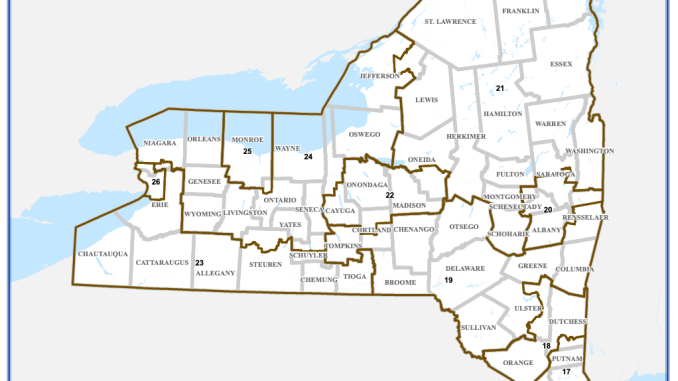
On Feb. 28, Governor Kathy Hochul signed a new congressional map into law a day after the Democrat-controlled State Assembly and Senate overwhelmingly voted to approve it 115-33 and 45-17, respectively. This comes following a two year saga in which redistricting maps were submitted, signed into law and challenged in courts multiple times since the release of the 2020 census data. Redistricting is a process undergone by states every ten years following the release of the census, however the recently enacted map is the third since 2022 to be passed.
New York, along with Virginia, is unique in that it uses a hybrid system of drawing new congressional district lines. This means that the legislature shares redistricting authority with a politician commission for both congressional and state legislative redistricting. This commission, the NYS Independent Redistricting Commission (IRC), was established by a constitutional amendment in 2014 to take effect in 2020. It is comprised of five Democrats and five Republicans.
The Independent Redistricting Commission was ordered in December by the state’s highest court to redraw the district boundaries, which it then published on Feb. 15. This map, as enacted, will be used for the June 25 primaries and Nov. 5 general election. It will also be used in congressional elections until 2030.
The possibility of a court challenge to this map was put down by state Republican Party Chairman Edward Cox who claimed there was “no need for further litigation.” The new map comes just as House of Representatives races begin to heat up.
New Paltz lies within Congressional District 18 and is currently represented in the House by Democrat Pat Ryan. With the new map, District 18 becomes more favorable for Democrats but will remain competitive in November as Ryan seeks reelection. He had won in 2022 against Republican Colin Schmitt by a narrow margin. According to Daily Kos, if the 2020 general election was conducted with the new districting, Joe Biden would have received 53.4% of the vote in District 18 against 45.0% for Donald Trump.
This map is expected to benefit Democrats as they seek to regain control of the House after two years of Republican majority. However, the final outcome of the two-year redistricting process turned out less ambitious in the end than expected, as Democrats were held back by a series of court challenges. They tried to push an aggressive gerrymander in 2022, only to be faced with a lawsuit. This led to a replacement map being imposed by a judge, which then helped Republicans in that year’s election.
According to Nicholas Fandos of The New York Times, “although a pair of swing districts would become more Democratic, lawmakers in Albany left the partisan makeup of 24 of the state’s 26 districts largely intact. The middle-ground approach reflected a desire to avoid another protracted court fight like the one in New York that helped swing control of the House to Republicans in 2022, while still better positioning Democrats in key districts.”
